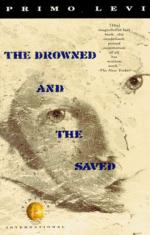
|
| Name: _________________________ | Period: ___________________ |
This test consists of 15 multiple choice questions and 5 short answer questions.
Multiple Choice Questions
1. Auschwitz was located in which country?
(a) Italy.
(b) Occupied Poland.
(c) Occupied France.
(d) Germany.
2. What was Auschwitz-Monowitz?
(a) A concentration camp.
(b) A work camp.
(c) A death camp.
(d) A medical research camp.
3. Which of the following was NOT a common justification that Nazis used when confessing?
(a) Being brought up in a racist environment.
(b) Believing in Hitler's ideas.
(c) Following the orders of a superior.
(d) Living in an environment of fear.
4. How did prisoners who speak Yiddish look upon Italian Jews who did not speak it?
(a) With suspicion.
(b) As traitors.
(c) With fear.
(d) As non-Jews.
5. How did most prisoners arrive at Auschwitz?
(a) By train.
(b) By bus.
(c) On foot.
(d) By car.
6. What do victims tend to do when they remember?
(a) Skim over painful episodes.
(b) Remember every detail exactly as it happened.
(c) Focus on the worst situations.
(d) Assign blame to themselves.
7. After liberation, why did survivors feel diminished as human beings?
(a) They lived at an animal level.
(b) They saw their families die.
(c) They witnessed great horrors.
(d) They were guilty of the charges against them.
8. What does Levi think it is his mission to do?
(a) Return to being a scientist.
(b) Bear witness by writing.
(c) Tell his story orally.
(d) Lead a positive life.
9. Which of the following is NOT something that survivors have a particularly hard time listening to people complain about?
(a) Hunger.
(b) Cold.
(c) Fatigue.
(d) Heat.
10. With which statement about Eichmann and Hoss would Levi agree?
(a) They should not have been punished for their actions.
(b) They joined the Nazi party opportunistically.
(c) They suffered from memories of what they did during the war.
(d) They had no choice in becoming Nazi officials.
11. What is Primo Levi's profession?
(a) Philospher.
(b) Laborer.
(c) Biologist.
(d) Chemist.
12. What does survival depend upon?
(a) Feeling heroic.
(b) Collaborating with the SS.
(c) Putting oneself first.
(d) Helping others.
13. According to Levi, why can't the "privileged" be objective?
(a) They were unaccostemed to manual labor.
(b) They befriended the Nazis.
(c) They watched those around them die.
(d) They suffered least.
14. According to Levi, why did prisoners not commit suicide?
(a) Their whole existence wa wrapped up in survival.
(b) The prisoners were hopeful that they would be freed any day.
(c) There were no means by which to do so in the lager.
(d) Religious people think suicide is an affront to God.
15. Why does Levi feel he is able to write on behalf of survivors?
(a) He has overall perspective.
(b) He saw death close up.
(c) He was given their consent.
(d) He is good at psychoanalysis.
Short Answer Questions
1. What did Chaim Rumkowski consider himself to be?
2. What language does Levi speak after the war?
3. What does Levi think about power?
4. What was the job of the Sonderkommandos?
5. Who was Chaim Rumkowski?
|
This section contains 495 words (approx. 2 pages at 300 words per page) |

|




